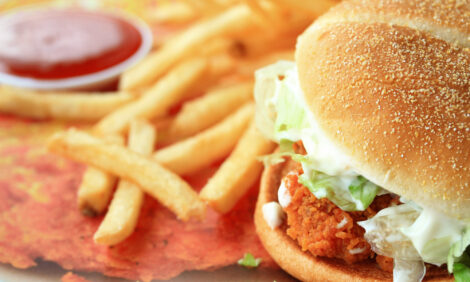



Dietary grape seed improves welfare and performance of heat-stressed Japanese quail
Effects of dietary grape seed on performance and some metabolic assessments in Japanese quail with different plumage colours exposed to heat stressAuthors Erişir Z, Şimşek ÜG, Özçelik M, Baykalır Y, Mutlu Sİ and Çiftçi M.
Introduction
High temperature is one of the environmental factors that influence physiological traits and production of poultry (Azad et al., 2010). Since heat stress (HS) increases reactive oxygen species, it leads to oxidative stress (Erisir et al., 2016). As a result of HS, oxidative stress increases the amount of malondialdehyde (MDA), which is an indicator of lipid peroxidation, and decreases serum, vitamin, and mineral concentrations, playing a critical role in antioxidant defense system (Çiftçi et al., 2016).
Grape seed (GS) extract contains the most beneficial groups of plant flavonoids and oligomers of proanthocyanidin. It is reported that proanthocyanidin extracts have cholesterol lowering and anticancer effects as well as antibacterial, antiviral, and antifungal activities (Cos et al., 2003). As strong antioxidants, proanthocyanidins have numerous positive effects on health (Singh et al., 2004). Grape seed oil, which is considered to have functional property, is rich in unsaturated fatty acids, containing 72-76% of linoleic acid ratio. The oil contains a vast quantity of tannin. This level is 100 times greater than oils of other seeds. This situation makes GS oil more resistant to peroxidation. Studies on prevention of thrombosis, inhibition of cardiovascular disorders, serum cholesterol lowering, vasodilatation, and regulation of autonomic nervous system against low density lipoprotein (LDL) oxidation have revealed that grape seed oil has pharmaceutical activity (Cao and Ito, 2003) and also contains tocopherol (900-1200 ppm). As the strongest fat-soluble antioxidants, tocopherols have vitamin E activity. They have antioxidant properties 50 times greater than vitamin E and 20 times greater than vitamin C (Martinello et al., 2007).
Plumage color (PC) is accepted as a characteristic of the breed or line in quail. In previous studies, lines of quail are named and defined according to PC mutations. Today, new lines with different PC mutations are being explored. It is becoming important to reveal yield traits of these lines (Cneg and Kimura, 1990).
Therefore, the objective of this study was to determine the effects of GS supplementation to basal diet on weight gain, feed intake, feed conversion ratio, carcass characteristics, some biochemical parameters, and antioxidant status of liver and kidney of Japanese quail in the growth phase with different PC exposed to heat stress.
Methodology
A total of 144 eight-day-old Japanese quail including 72 (36 females, 36 males) grey and 72 (36 females, 36 males) golden were used in this study.
The quail were kept under HS (16 h at 34 °C, 8h at 22 °C) and thermo-neutral (24 h at 22°C) conditions between 15 and 43 days of age.
All quail were fed a basal diet (control) and basal diet supplemented with GS at both 10 g/kg and 20 g/kg ratios.
Each feeding treatment was repeated three times including four quail (two females and two males) per replicate.
Results
Heat stress considerably decreased the live weight gain on days 29-36, 36-43, and 15-43.
Golden quail had higher live weight from the beginning of the trial. The increase of live weight on days 15-43 was higher in the golden group than in the grey group.
Malondialdehyde (MDA) levels of liver and kidney tissues increased in the heat-stress group compared with thermo-neutral group (P<0.001).
In HS, significant increases were determined only in catalase (CAT) in the liver and in glutathione peroxidase (GSH-Px), CAT, and glutathione (GSH) in the kidney (P<0.05).
Addition of dietary GS decreased MDA and antioxidant levels, which increased in liver and kidney of quail during HS.
Plasma total cholesterol, alanine aminotransferase (ALT), and aspartate aminotransferase (AST) levels were higher in quail under HS.
Plasma total cholesterol, glucose, triglyceride, AST, and ALT levels of quail under HS decreased due to addition of 10 g/kg GS.
Conclusion
Due to its positive effects on welfare of birds under stress conditions, grape seed can be used as a feed additive to quail feeds.
Erişir, Z., Şimşek, Ü.G., Özçelik, M., Baykalır, Y., Mutlu, S.İ. and Çiftçi, M., 2018. Effects of dietary grape seed on performance and some metabolic assessments in Japanese quail with different plumage colors exposed to heat stress. Revista Brasileira de Zootecnia, 47.









